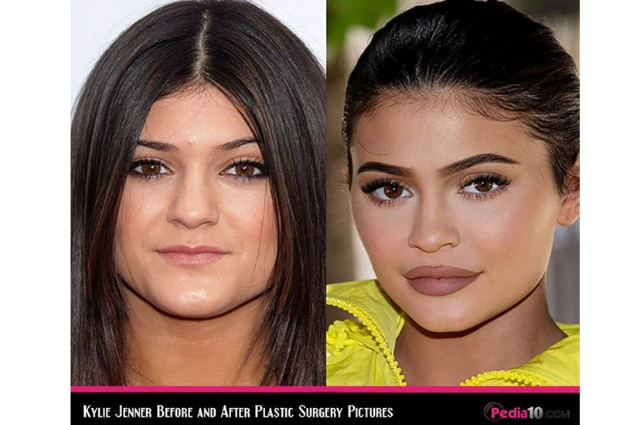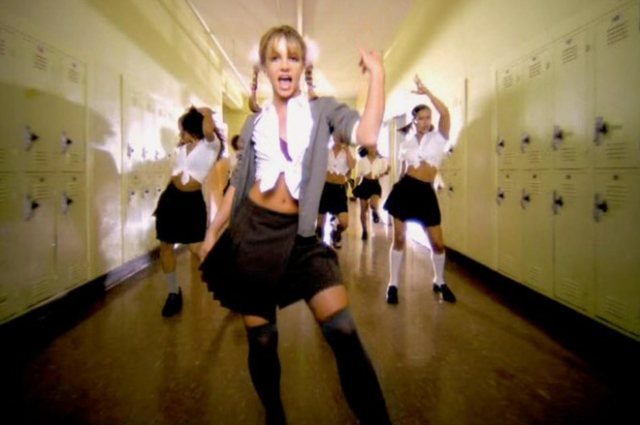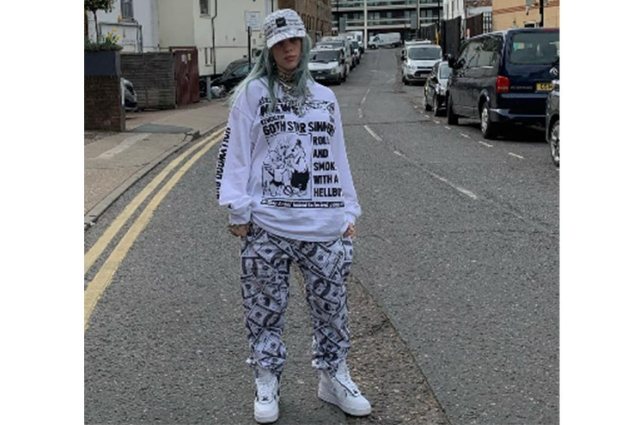For a long time now, there has been a debate between clashing generations on the topic "How many likes is my life worth?" Simply put, arguments about if Social Media is more helpful or harmful to its users, specifically teenagers, has existed for a long time and will exist until the end of it.
Uncountable studies and innumerous statistics have time and time again shown the detrimental psychological effects of social media on its participants. Ofcourse, every coin has two sides, meaning: the advantages of the internet balance the disadvantages down to the dot. Which is exactly why the debate between pro social media users and anti social media users will keep going round and round in a paradox without any definite solution.
So, I'll tell you something conclusive: Social networking hasn't just harmed teenagers, Social Platforms have killed the era of teenageism altogether.
Now, I am not a millenial on an armchair talking about the "computer bad, book good" phenomenon, I am a teenager standing right at the centre of the web woven by social media telling you how its critics extend long and far beyond just tik toks triggering personal insecurities and instagram memes making fun of mental health issues.
Before we learn how social media permanently alters the way we function and think without us even noticing it, let's talk about how this service is engineered to have us fall down a rabbit hole of obsession without fail through its full-proof algorithms.
PHASE I: ASININE ADDICTION
Social Media is the house to manifold interests and niche communities. If you have a hobby, there is going to be a space of people with the exact same interest as yours. The lure of an accepting community and validation through the users who have the same ideologies as us is too good to ignore.
Most teenagers use social media for escapism, either in a fandom space or running individual pages about both their personal lives and/or their avocations. This can go one of two ways:
- The power of anonymity gives them a route for escapism from their daily lives, leading them to live an alternate reality designed according to their choices, among a community of people with similar beliefs. In such platforms, more often-than-not actions don't lead to consequences and teens are allowed to freely express their opinions they can't in real life, leading to an addiction of wanting to be ever-present in a carefully built virtual space.
- The crave of numerical competition- more likes, more comments, more followers, attaching your self identity to increase in these numbers, especially if it is on posts about your own life and personality, leads to an addiction of wanting to be ever-present in a virtual reality that are these blogs to feel good about oneself.
I do admit, your experiences depend largely on the way you consume media and content, but teenagers and young adults are impressionable people. They want to join the most popular trends, the ever changing movements that will give them their 15 minutes of fame, before realising the everlasting damage chasing behind such unachievable standards causes them in the long run.
PHASE II: DIFFERENT EFFECTS CAUSED BY DIFFERENT PLATFORMS
- TIK TOK:
Investigation into Tik Tok is the latest evidence of momentum behind the act of protection of teenagers from the toxicity of the internet. A mere 15-minute scroll on the app (screenshots of which are pasted on every other platform from reddit to youtube to instagram with multiple million likes) will have you encounter various 'trends' that could not only lower a person's self esteem but also possibly trigger their body dysmorphia.
As harmless as these trends look on the surface, they are basically affirming the idea that you are 'ugly' if you don't look a certain way and then encourage the use of filters, and in extreme cases, surgery, to fix said ugliness. The certain way being american and eurocentric beauty standards endorsed by internet influencers which are not only rooted in racism but are also impossible to meet unless through external altercation (editing and cosmetic surgeries).
The Kardashian-Jenner clan is a phenomenal example of embodying and encouraging a very specific physical aesthetic. We have seen celebrities such as Kim Kardashian, Khloe Kardashian, Kylie Jenner have a physical transformation on camera and still deny any allegations of getting surgery done. These include complete changes in facial structure, body shapes and promotion of extremely unhealthy dieting habits.

Let's be clear: the issue here isn't getting help from surgeries to feel more confident in your own skin. Any individual has full control of what they choose to do to their own bodies. The issue here is denial of said surgeries leading youngsters, especially teenage girls, to believe that this is how they are supposed to look. And if they don't, then they are supposed to be ashamed of not having the 'ideal body' and the 'perfect face' which, not only provides women with an unrealistic body standards, but also provides men with unrealistic portrayal of a body image for them to further propel on young girls.
But, if we see these video formats being evidently damaging to the majority of the audience, how do they transition into the most popular trends of the years? The answer is simple: Tik tok uses an AI-generated beauty algorithm which picks the faces it deems more beautiful than others from a group and pushes content of those specific creators to achieve virality.
Classic case of creating a problem to market a solution, conveniently forgetting the consumer base of these apps are largely made up of teenage girls. Feeding them the idea that their value is inherently attached to their bodies, and their bodies are evaluated through the gaze of a...computer?
- INSTAGRAM:
"What you see is not what you get" and "Nobody posts their failures on social media." How many times have you heard this phrase on one of those hustle culture motivational pages, and how many times have you stopped to think that through a post-ironic lens, it is indeed true.
Instagram is the ultimate hub of social networks, hosting not only original content but also the top selective content from every other social media, making it the "always open" outlet of the internet. Instagram creates an isolated environment where your always updating feed, no matter what you have curated it to, has you measuring what content gets more likes in the least amount of time.
It has you attaching your content to a social currency: what brings in the most likes and the most audience? Is it your face? Is it your art? Was that post good enough? How has that one distant acquaintance gotten more likes on a photo of a beach than you ever did on anything else? Are you not good enough? Should you wipe out your entire feed? Are you not good enough?
A WSJ report mentions that "Thirty-two percent of teen girls said that when they felt bad about their bodies, Instagram made them feel worse." The UK’s Royal Society for Public Health found that Instagram is associated with high levels of anxiety, depression, bullying and a “fear of missing out (FOMO).” They can also foster a negative body image and poor sleep habits.
Despite the social insecurity, doubts in self-worth, attaching your value to numbers and creating everything into a competition where you are the only participant with no way of winning, Instagram is still the second most used app in the world with people aged 15-24 making the largest audience of their demographic.
Regardless of the statistics I present and despite the studies I put forward, will it ever affect the 10 hours of usage time of teenagers on Instagram? Is it conscious at all? Is Instagram worth it? Is it ever going to be good enough?
- TWITTER:
Unlike Tik Tok and Instagram, Twitter is not a visual based app. Twitter encourages users to put forward personal views and opinions. It is also the app where curation of your feed directly establishes your experiences, communities segregated by interests such as-: Stan Twitter, Film Twitter, Anime Twitter, Local Twitter, etc.
Despite having the most distinguished interface, Twitter might just be the most toxic app among them all. Of course, Twitter encourages access to instant international news, sources and content from all across the world in live-time. But it is especially dangerous to teenagers, developing a false sense of moral anxiety as their personalities.
Any major international event surfaces on Twitter first. Performative activism running rampant on Twitter has teenagers on the app feeling guilty for not being up to date with every catastrophic occurrence in the world. Not only that, Twitter has stigmatised the entire concept of being allowed to make mistakes and grow from it. People who use Twitter as their major source of entertainment, in search of drama, witch hunt anybody and everybody who dares fall one step out of line.
Teenagers are the main prey of the moral police. Young audiences aren't allowed to have a 'wrong' opinion or be unknowledgeable about a topic, lest they are immediately put on scrutiny and criticised by mass audiences as a part of sheep mentality. Nobody on twitter stops to think if an individual made a genuine mistake or if their post came from a place of no ill-will, and teenagers impressionable to such behaviour, not only develop anxiety by being on the receiving end of it but also start to think that's the right way to operate if they see somebody making a mistake.
PHASE III: THE DEATH OF TEENAGEISM
I. HYPER SEXUALISATION OF TEENAGE GIRLS ON SOCIAL MEDIA
Social Media forces teenagers to grow up quicker than their age. Exposure to all forms of media without any age censorship, unrealistic portrayals of physical appearances. From a young age, girls are sexualised on the internet without their consent, placed in vulnerable situations where their photos, and specifically their bodies, are treated as hot gossip. This scrutiny of teenagers leads them to have a distorted connection with perception of their sexuality, forcing them to want to grow up at a pace faster than their age.
This materialises in various different forms:
- SCHOOL GIRL TROPE: This concept originates from the age-old idea that the younger you look, the better. This leads young people to be sexualised, not only on the internet but also in real life, simply for existing. The School girl trope is adults dressing up as school girls to look appealing. As weird as the idea sounds, you see it everywhere. From anime to music videos (Britney Spears' classic hit "...Baby One More Time"). Hell, people still dress up as school girls for halloween.

THE MEDIA SCAN: Teenagers are inherently put in the spotlight for simply looking or behaving a certain way. It ranges from mild consequences like memes based on aesthetics (emo, goth, punk, hyper-feminine) to more extreme situations like the case of Billie Eilish, American Singer-Songwriter who got famous at the age of 16.
Billie Eilish is well known for wearing oversized baggy clothes to resemble a 90's aesthetic, which was later revealed to be the reason behind her fear of being judged and objectified in the media as a minor. To some scale, this is experienced by every teenager, by their own family and surroundings, inspected and commented on without their consent.

II. EFFECTS OF TEEN TV & MEDIA
The 21st century has seen rapid shrinking of the teenage demographic as kids and youngsters between that age are forced to grow up faster than ever before. Nowhere is this divide between children and teens more visible than in the media. Children start off watching shows on Disney and Nickelodeon before making a drastic leap to shows on Netflix, Amazon Prime and HBO that depict teens doing drugs, hypersexual behaviour and worse, gang involvement.
I am aware of the fact that fiction is just that- fiction! Something that should be separated from reality. But since when has the depiction and personalities of our favourite celebrities on TV not impacted the way we represent ourselves. Especially in this age of social media, where all content is democratised and available to all audiences regardless of age, teen TV has become striking enough to match and even outdo adult programming.

The recently recognized globally awarded programme Euphoria is an outstanding example of the case. The series is celebrated for things worth criticising. Best known for its outstanding cinematography, wonderful acting & music, euphoria is well-known for exploring stigmatised themes in a high-school setting like severe drug addiction, sexual insecurities, depression and anxiety from the lense of teenagers and their friend circles, all the while showcasing graphic sex scenes and complete nudity. Beyond how gorgeous the aesthetic of the show is, there is no meaningful moral of it all. Of course, media doesn't have to deliver powerful messages for it to be worth it, but Euphoria is just one big void of emptiness masked as entertainment.
Maybe the creative message behind it all is to comment on how the internet and everything that comes along with it does to teenager's perception of their lives and sexuality, but there is a questionable margin between commenting on porn and becoming it. Most teenagers on the show are sexualised from the get-go, no mention of any relevant backstory to provide context. Kat Hernandez, a character on the show, was depicted having an identity crisis, being confused with not knowing what she does and who she wants to become, which led her to act as a dominatrix for adult males, as a minor.

Source: www.twitter.com
Of course, Euphoria is rated for mature audiences, but does that really make it okay? An entertainment programme targeted towards adults majorly portraying teenagers having sex?
Without fail, every upcoming generation will be exposed to more and more generally considered taboo content as conversations around conversative topics become more normalised. That is the good part about social media. But the evolution of social media, Teen TV, idea exposures and fashion is happening at a much faster pace than that of the understanding of teenagers.
Example being the clash between Bhad Bhabie and Jojo Siwa. Both were exposed to the media as teenagers of the same age and both were criticised for the way they chose to present themselves. While Jojo Siwa was considered 'childish' and 'too immature' for her age, Bhad Bhabie was considered 'over mature' for the way she chose to dress up. Both teenage social media influencers that had their spaces invaded by adults passing commentary on their lives. So is social media good or bad for teenagers? And if it's not a safe space, then is it because of teenagers themselves? Or because of the way adult audiences treat teenagers regardless of their actions in this virtual reality of the internet?

Source: spotify.com (left) & www.instagram.com (right)
When you are young, I know you feel like you have it all figured out. And arguments like these might feel like a personal attack. But hey, the smartest thing prejudice ever did was frame sexualisation of teenagers as 'empowerment'. So take it from me, somebody who's been there and done that, you don't have to be labelled or liberated. You don't have to have it all figured out. You don't have to cater your presence, in real life too but especially online, to anybody else but you. And finally, "How many likes is my life worth?" is a question suitable only for a Chainsmokers song.
